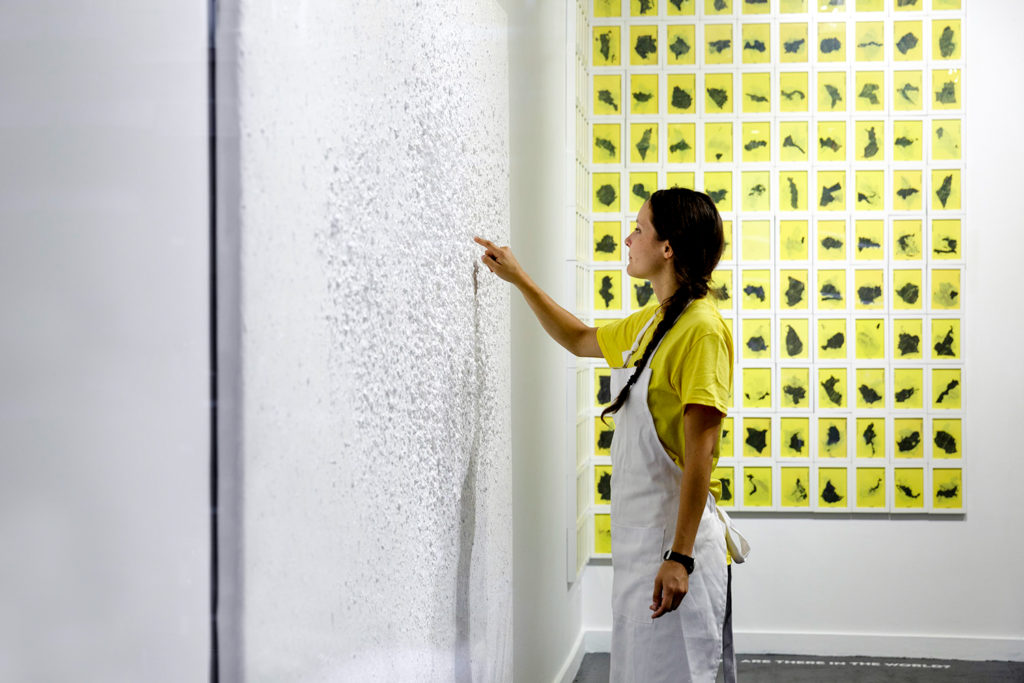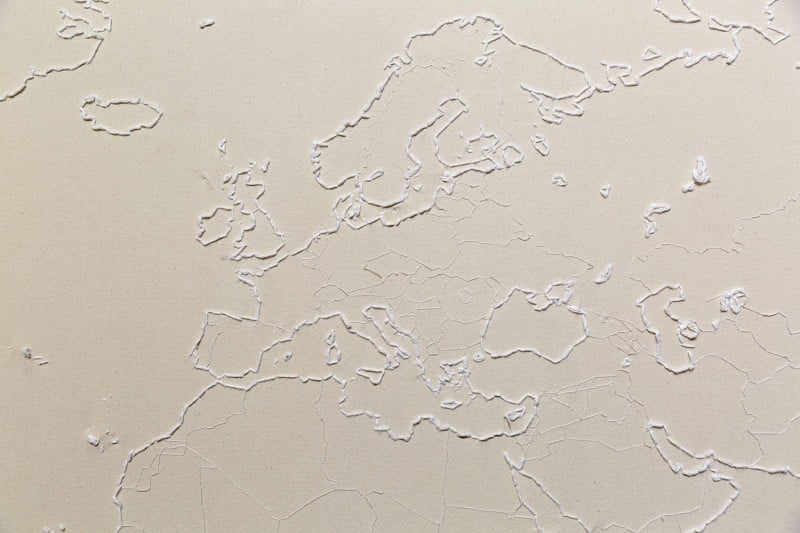On View
This Artist Is Tracking Every Death Reported in the News Worldwide in One Painting
Aritst Capucine Gros is also in the midst of a 199-day performance in which she wears one t-shirt for each country in the world.

Aritst Capucine Gros is also in the midst of a 199-day performance in which she wears one t-shirt for each country in the world.

Sarah Cascone

There are approximately 199 countries in the world, and Brooklyn-based French artist Capucine Gros has made a t-shirt with a map for each of them for her new body of work. The artist is wearing each shirt, between March 20 and October 4 of this year, in order of increasing population size—beginning with Vatican City and ending with China. This is just one of the ongoing projects showcased in her first solo show “Implicit Borders: a cartography of free will,” currently on view at New York’s Catinca Tabacaru Gallery (until August 12).
Gros is obsessed with maps. Her work deals with love and death, and the invisible borders that separate us from one another. Born in Switzerland— but never a citizen there—and having lived in the US for the last ten years, the concept of national identity and how it is defined has always fascinated her.
For her other ongoing project, Human Strokes (2010–), Gros has been working on an all-white painting that renders the map of the world one brushstroke at a time, based on the location of deaths reported daily in the news. Each mark signifies one death—France and New York are particularly thick with paint (which says more about what kind of news the artist consumes, and what kind of deaths make news, than where they are actually occurring most). She adds to the work each day at 5 p.m.
While that work isn’t for sale, Gros has kept records of all the data recorded in the painting, and you can commission a new version based on the deaths from any year since the painting’s inception. (If that’s too morbid, she also makes maps showing the locations of everyone you’ve ever loved, plus a map of everyone you could potentially love.)
Moreover, you can buy individual unique prints of each country inspired by the t-shirt series, hung in a grid in the gallery, for $199 each. Gros is also documenting the reasons why collectors have picked the country they are purchasing. (The United States print was the first to sell—”for patriotism,” according to the buyer.) The t-shirts are also for sale for $35 each, but you only get to chose the color and size; the country is picked at random. Both her t-shirt and prints series are titled Approximately 199, a nod to the number of countries in the world.

Capucine Gros, Borderline (2012–), detail. Courtesy of Catinca Tabacaru Gallery.
Another massive map project is Borderline (2012–), a canvas embroidered with all of the world’s borders, with thick thread for the natural ones such as lakes and rivers, and thinner demarcations for the more arbitrary ones designated by nation states. Gros adds to the piece whenever borders shift or become disputed—and in the process, her artwork serves as a physical manifestation of political instability.
“Capucine Gros: Implicit Borders: a cartography of free will” is on view at Catinca Tabacaru Gallery, 250 Broome Street, New York, July 13–August 12, 2017.